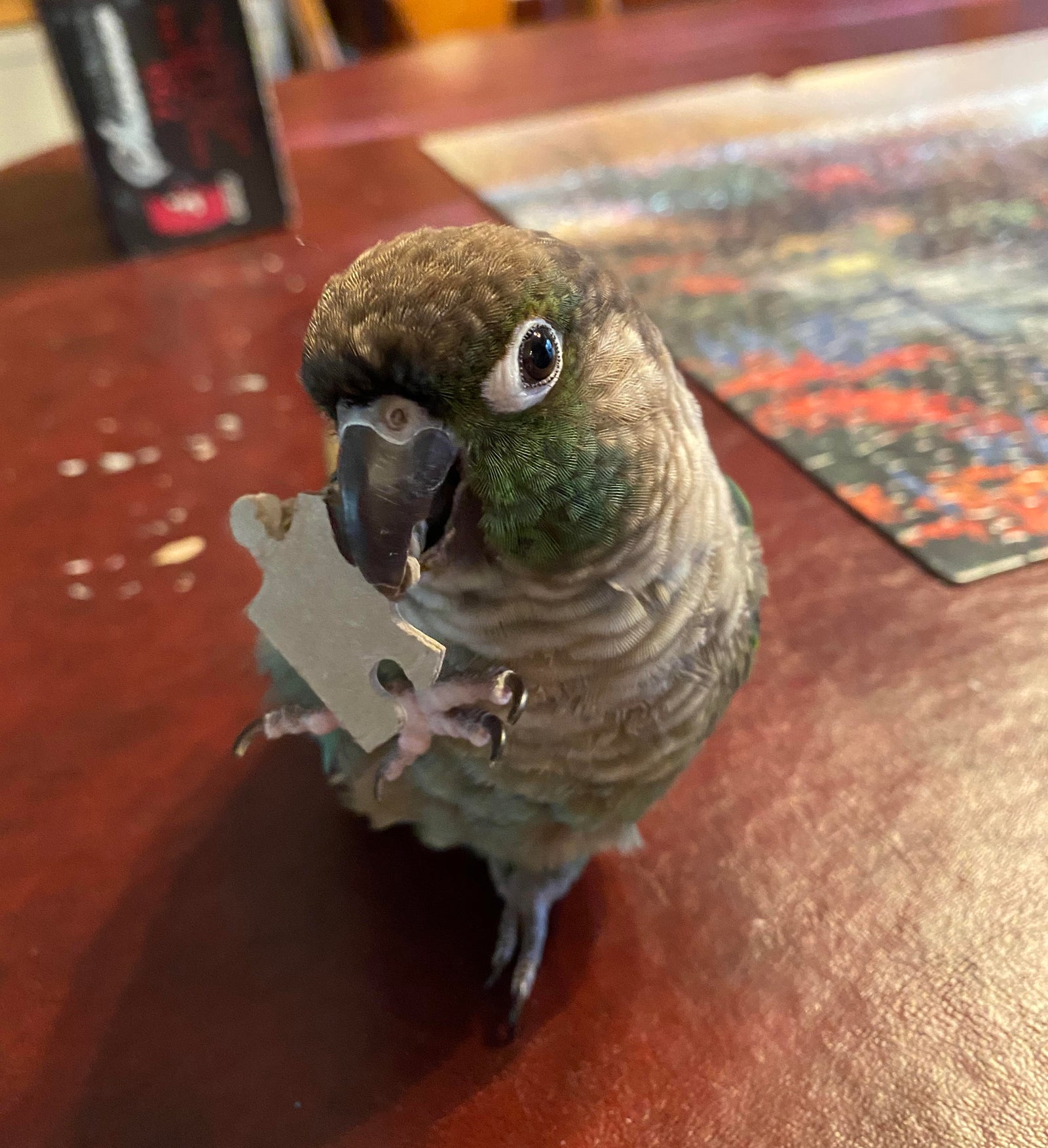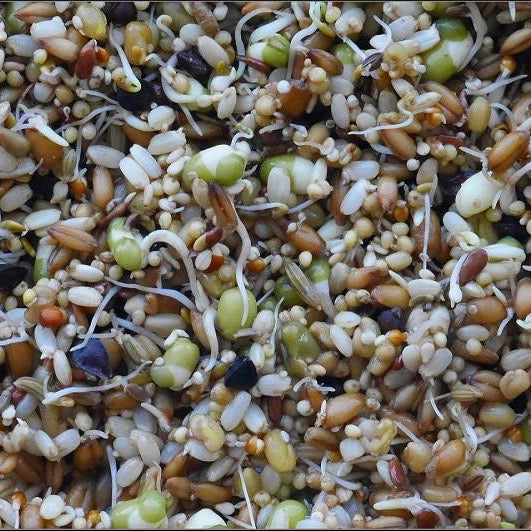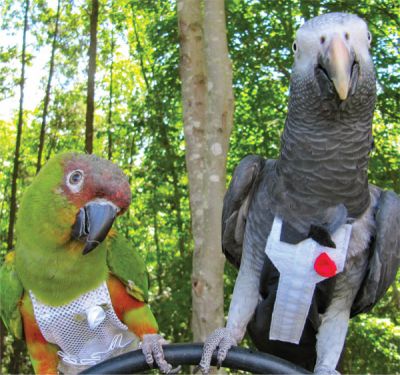
Being a new bird owner can be puzzling at first. Because they have very different biological and psychological needs than most other pets, there’s a lot of research and learning to be done. Even when you’ve been a bird owner for a while, you can still learn new tricks. Try these helpful and slightly random tips to make parronthood just a little bit easier.
The Towel of Correction. We got a new Green-cheeked Conure (aka GCC) last year, and even though we’d had a conure before, this little guy changed all the rules. Greencheek owners often warn that they can be nippier than most conures, and they aren’t kidding! Our Percy is subject to many moods and you must be prepared to protect yourself. A simple tool called “The Towel of Correction” is the great equalizer. Pay attention to your bird’s body language, especially prior to a bite. GCC’s do what is called the “flat head;” they flatten the feathers on top of their heads in a display of aggression or just plain old feeling good about themselves. Different types of parrots have different warning signals, which may include pinning eyes, spreading tail feathers, or ruffling the feathers on their backs. This is often an indicator that they feel inclined to bite!
If you see this body language and it’s necessary to handle your bird or remove him/her from yourself to avoid getting bitten, take a hand towel and gently swoop under their belly to pick them up safely and put them on the sidelines where they can’t reach anyone. If you have a larger bird, use a larger towel. The towel works great for everyone – it is a neutral party, so your bird doesn’t become afraid of you or your hands, and your hands are protected. Keep a towel handy when your bird is around, especially if it is known to bite.
“Step Up” and “Step Down” Commands.These old school tools have been around for years, encouraged by many behaviorists, and they work for many reasons. When you approach your (somewhat tame) bird and want it to step up, you maintain control by asking it to step up (onto your hand or a dowel) or step down (off of you or the dowel). Initially, use treats or praise every time they do what is asked to reinforce the behavior. Teaching them to step down is just as important as stepping up, as getting them off you can become a safety issue for you or the bird. By using these commands regularly, the bird knows what you are asking, and it gives both of you boundaries that build trust and establish expectations. Boundaries and trust are so important for secure relationships.
Vitamin A Soup.Stubborn birds that will eat nothing but seeds (budgies being a prime example) often get into nutritional trouble when moulting time comes. Since seeds lack the necessary vitamin A, they’ll often have a tough moult or even be prone to respiratory issues. You can see evidence of a tough moult when they develop large patches of reddish feather bumps on their heads or even bald spots. Since they must drink, water is an easy way to get natural vitamins into their system. Boil about 1 Tablespoon of carrot slices, red peppers or broccoli leaves in a half cup of water for about five minutes, let it cool and serve, refrigerating leftovers.
Ice Cube Trays. For parronts who make chop for good birdies that eat a varied diet, the problem of portioning arises. If you have a jungle full of birds, you can just put daily portions in freezer bags, but if you have just a few birds, invest in some ice cube trays for quick, smaller portions. Put one cube in the fridge the night before to thaw for the next day. No need to warm up the food, as warm food can encourage unwanted breeding behaviors (biting, egg laying, territoriality, etc.).
Experiment with Baths.At a minimum, your bird should bathe in plain water at least once a week and should be provided with the opportunity more often than that, depending on his or her preferences. If your bird doesn’t seem to like to bathe, perhaps it has to be in the mood, or maybe just needs a different method, requiring a little experimentation on your part. Some like to bathe in shallow pools like sinks or water bowls. Some prefer running water like the kitchen faucet or shower. There are even little bird fountains or kid toys that pump running water into a bowl. You can get a shower perch with suction cups, or just bring the bird in the shower with you, using the curtain rod or shower door as a safe place to put them while you lather up. Some stubborn birds just require a misting – Flairosol water misting bottles are perfect. If they screech or try to get away, it’s probably too traumatizing for them, so a different method may be in order. There’s always a good old vacuuming – some crazy birds get inspired to bathe in their water bowls only when the vacuum is running. Don’t give up and try all kinds of different things, a clean bird is a healthy bird!
Keep lovin’ your birdies,
Lori
Bird mama to Percy, Pippin & Twitter
Lori
Bird mama to Percy, Pippin & Twitter
Leave a comment (all fields required)
Comments will be approved before showing up.


